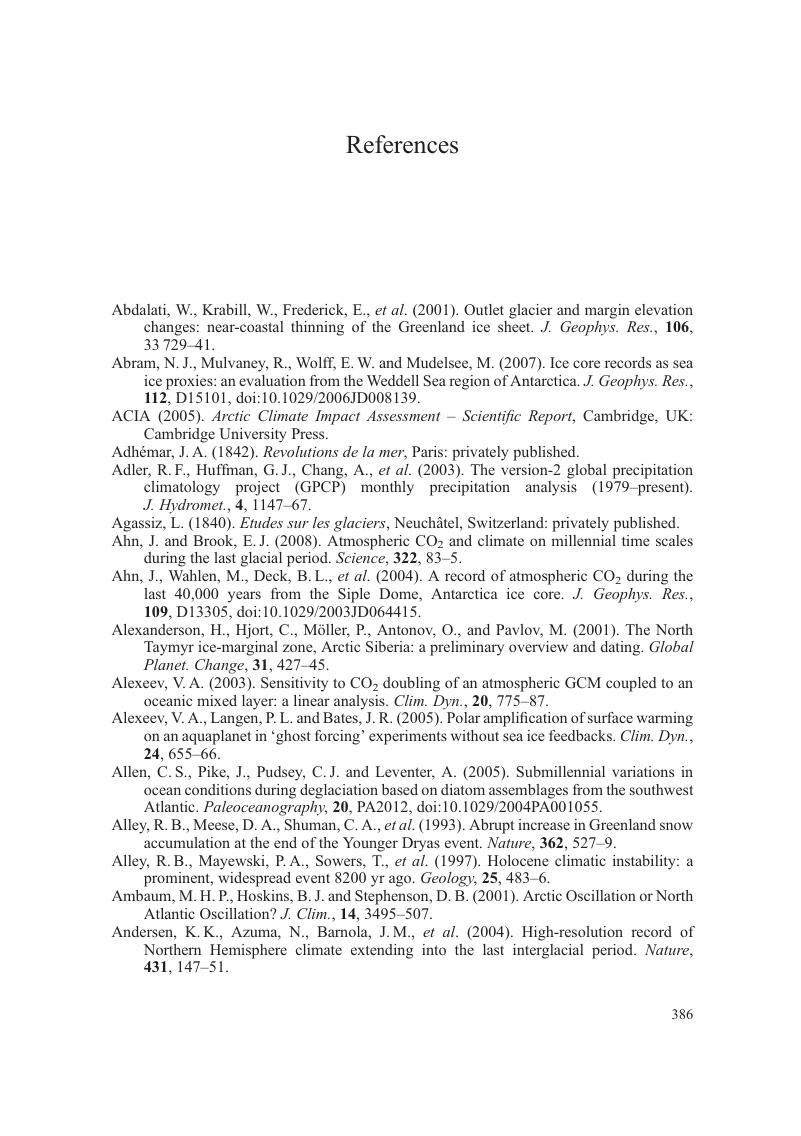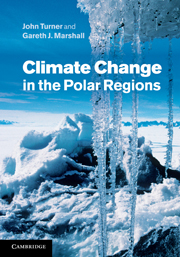Book contents
- Frontmatter
- Contents
- Preface
- 1 Introduction
- 2 Polar climate data and models
- 3 The high latitude climates and mechanisms of change
- 4 The last million years
- 5 The Holocene
- 6 The instrumental period
- 7 Predictions for the next 100 years
- 8 Summary and future research needs
- References
- Index
- Plate section
- References
References
Published online by Cambridge University Press: 07 September 2011
- Frontmatter
- Contents
- Preface
- 1 Introduction
- 2 Polar climate data and models
- 3 The high latitude climates and mechanisms of change
- 4 The last million years
- 5 The Holocene
- 6 The instrumental period
- 7 Predictions for the next 100 years
- 8 Summary and future research needs
- References
- Index
- Plate section
- References
Summary

- Type
- Chapter
- Information
- Climate Change in the Polar Regions , pp. 386 - 427Publisher: Cambridge University PressPrint publication year: 2011



